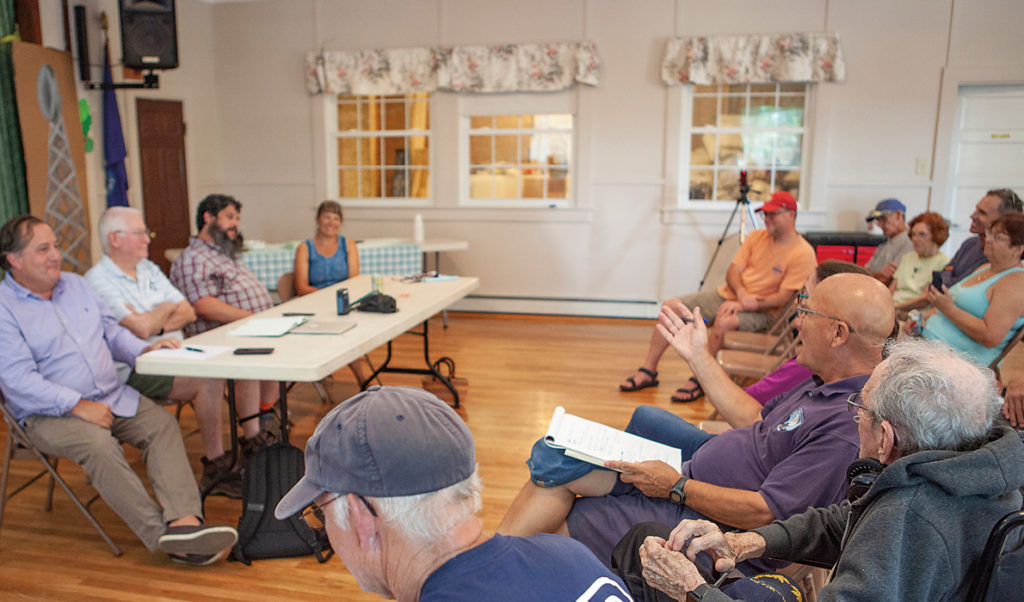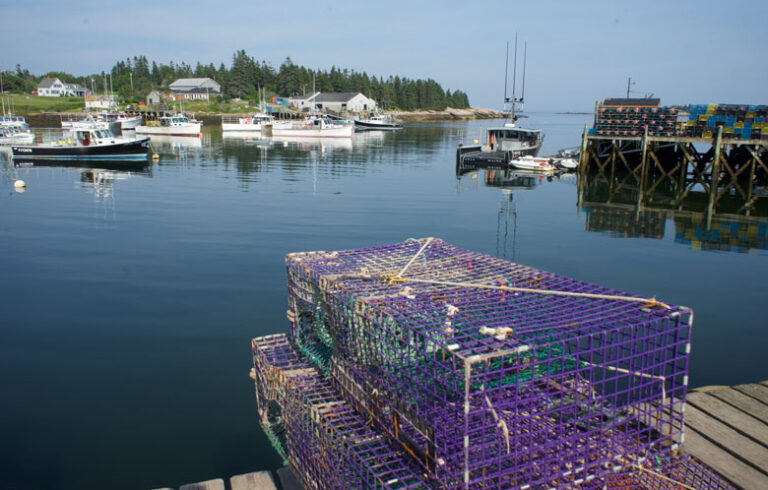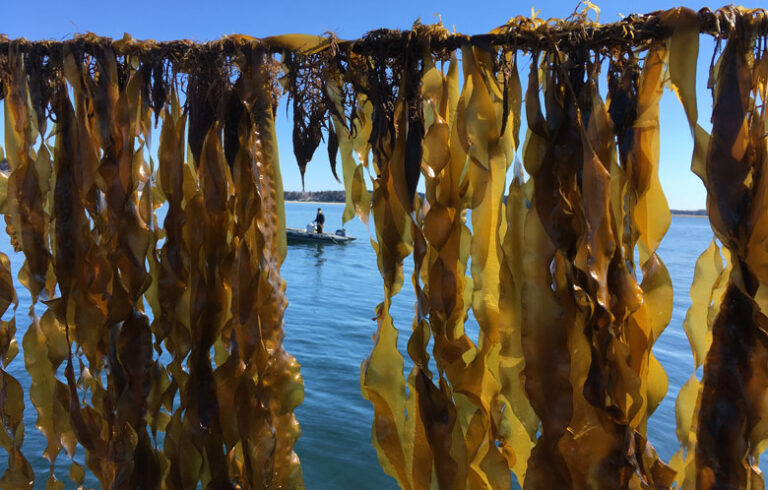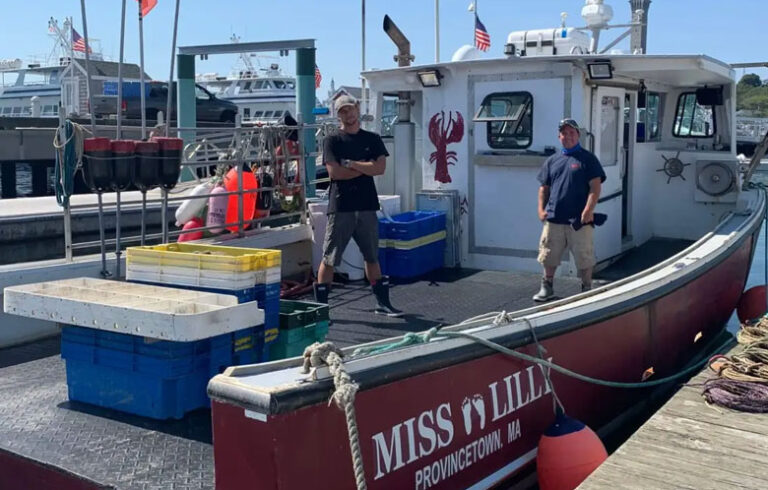By Jack Sullivan
More than two years ago, three Casco Bay islands began in earnest their pursuit of high-speed, reliable internet, otherwise known as broadband. One of the three, Cliff Island, just crossed the finish line, and the excitement for that achievement was evident at a community meeting on Aug. 15.
No celebration is complete without cake, and the cake laid out at the community hall that day was decorated with icing in the shape of a microwave tower, which is what will bring the service to the island.
On May 5, 2017, Chebeague Island, Cliff Island, and Long Island released a combined request for information to attract internet service providers able to design a system to bring broadband to the communities. Cliff Island, the furthest flung of the year-round Casco Bay communities, was the first to achieve broadband connectivity.
On an island, broadband enables businesses to market themselves online, allows patients to use telehealth services, and school children to access online educational materials and connect with off-island students. Broadband also makes settling on an island more attractive for young families. Those looking to move to Maine fulltime or seasonally may require broadband to work remotely or simply to live a 21st century life.
Cheryl Crowley of the nonprofit organization Sustainable Cliff Island helped lead the effort.
“This is for the betterment of the island,” she said at the celebration. “Technology is such a part of everybody’s life. They hate having to go down to the town square to get the highest speed so they can do their work.”
Sustainable Cliff Island started sowing the seeds of enthusiasm about broadband at about the same time the Island Institute (publisher of The Working Waterfront) started its rural broadband support work. The Island Institute helped with the planning process, but projects like Cliff Island’s rely on the dedication and problem solving of community members like Crowley. In Cliff’s case, the problem solving resulted in the collaboration of two firms: Axiom Technologies and CI Fiber.
Fresh from its island fiber-to-the-premise broadband buildout on the Cranberry Isles, internet service provider Axiom Technologies agreed to provide Cliff Island with the labor and infrastructure needed to bring broadband out to sea.
No two islands are quite alike, and this held true when Cliff Island was going through the community broadband process. Though the Cranberry Isles were a good example to follow, the issues of funding, infrastructure ownership, and permitting were different on Cliff Island because Cliff is part of the city of Portland. Grants designed to fund rural broadband are typically awarded to some of the least populated municipalities in the country, and Cliff Island is part of the most populated city in the state.
Being part of Portland meant Cliff Island was unlikely to land grants, yet city spending for the project was unlikely.
With the help of seasonal resident Walt Smith, the island got creative in leveraging the resources it does have. Smith led the effort in founding CI Fiber, the corporate entity which now owns the broadband infrastructure. CI Fiber then sold shares to those who could afford to lend support. The project became one which depended on philanthropic giving, as the shares were likely to be slow in earning back the initial investment.
This funding model won’t necessarily work everywhere, as Crowley acknowledged.
“It’s very unique to our island’s situation,” she said. “And, of course, every island that wants broadband has to find that.”
What other rural communities might learn from Cliff Island is the importance of communication in getting neighbors to join the broadband crusade.
“I think a key thing is to continue to have community meetings. Keep the community involved throughout,” Crowley explained. “I think that’s where the buy-in came from. We made the process transparent.”
The buy-in was certainly large. There were 80 subscribers who signed up for broadband service (the target was 60) and, at the community celebration, Crowley listed over 30 names of individuals and organizations to thank for their hard work on the project. This list included a slew of community members who pitched in in a variety of ways—such as Crowley’s daughter, who baked the broadband-themed cake to top it all off.





